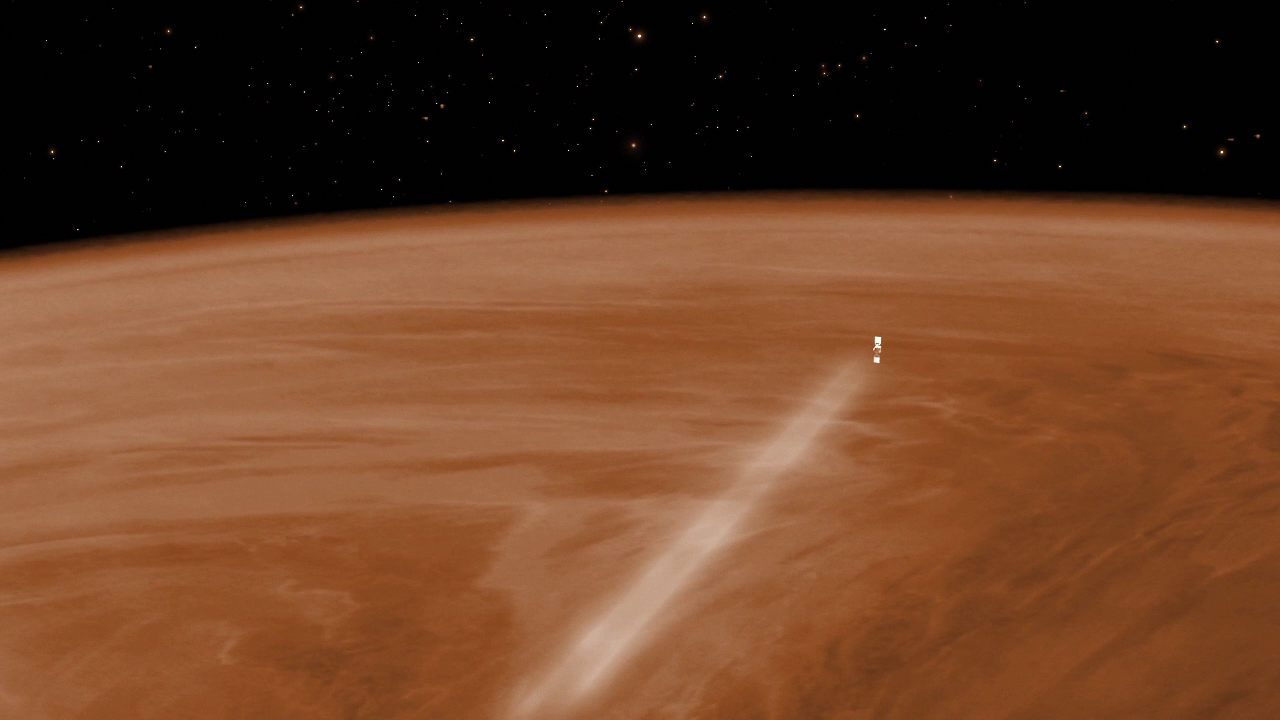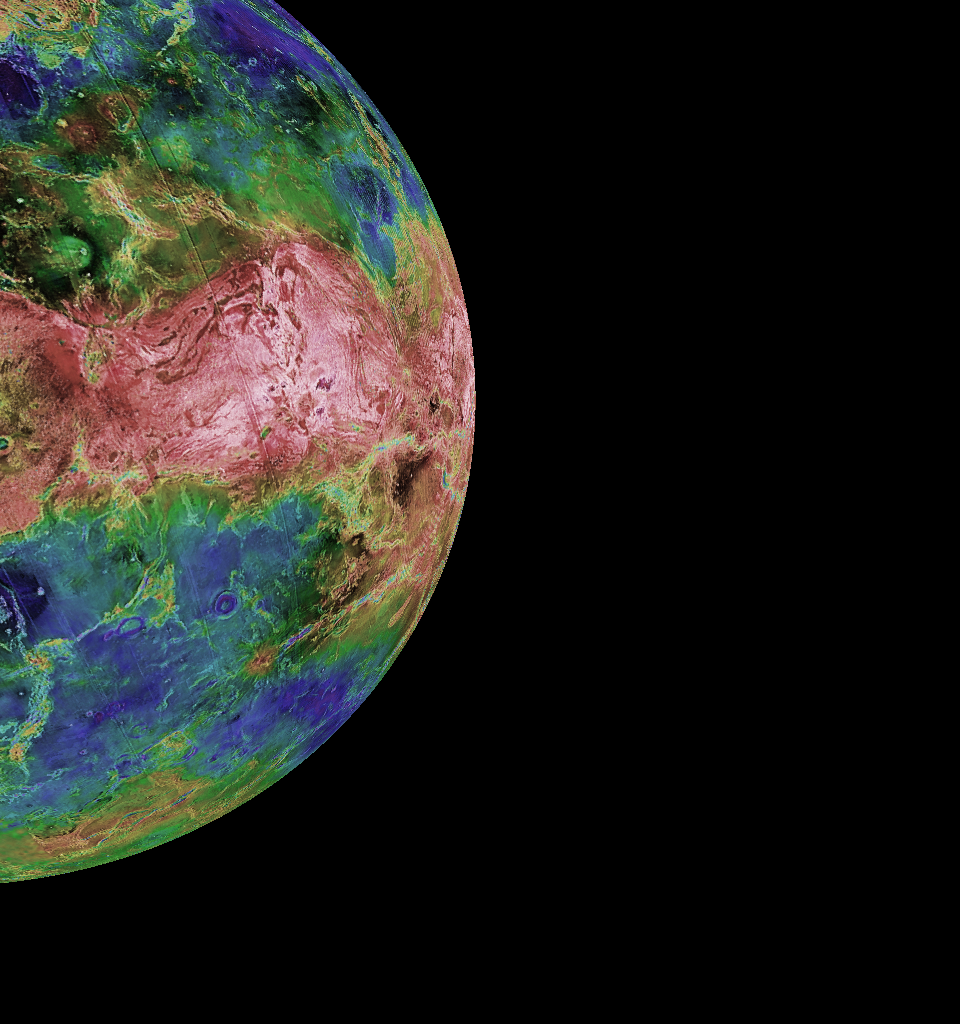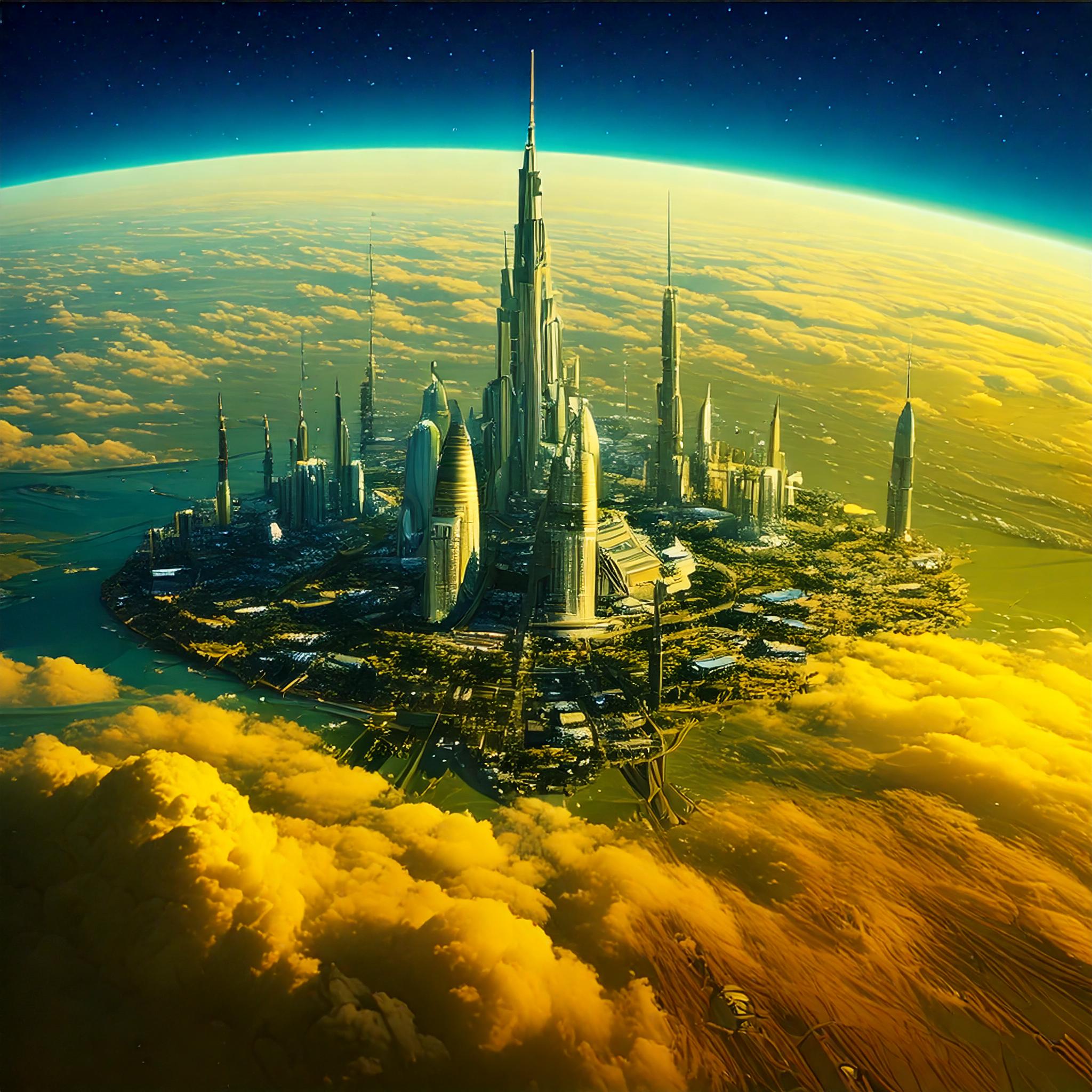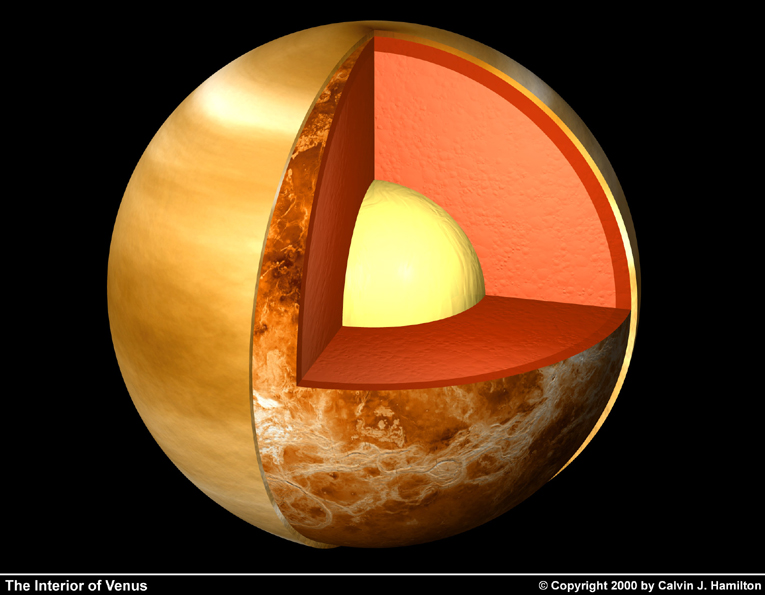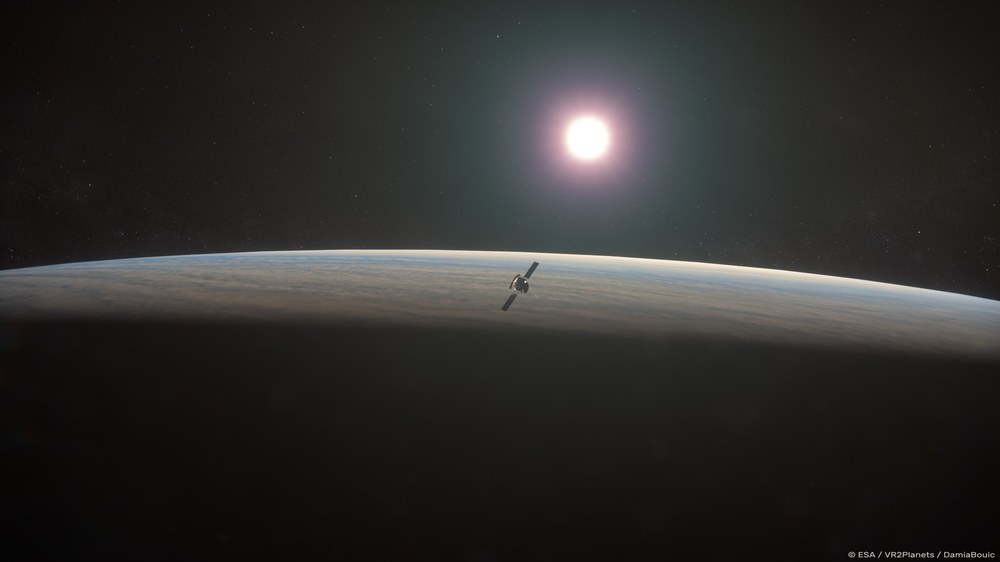Venus
Overview
| Location: | 2nd planet from the Sun, orbiting it at an average distance of about 108 million kilometers (67 million miles) |
|---|---|
| Size: | Venus has a diameter of 12,104 kilometers (7,521 miles), making it similar in size to Earth (about 95% of Earth’s diameter). |
| Surface Temperature: | 465°C (869°F) |
| Athmospheric Composition: | Carbon dioxide (96.5%) with traces of nitrogen (3.5%) and other gases like sulfur dioxide |
| Athmospheric Pressure: | 92 times that of Earth, similar to the pressure found 900 meters (3,000 feet) underwater on Earth |
| Orbital Duration: | 225 Earth days |
| Named After: | Venus is named after the Roman goddess of love and beauty |
| Remarks: | Venus's "Morning Star" and "Evening Star": Venus is visible to the naked eye from Earth and appears as the brightest natural object in the sky (after the Moon). It is often referred to as the "Morning Star" or "Evening Star" depending on its position relative to Earth and the Sun. No spacecraft have successfully landed on Venus until recently due to the extreme conditions. However, Soviet probes like Venera 13 (1982) and Venera 9 (1975) returned images and data from Venus's surface. |
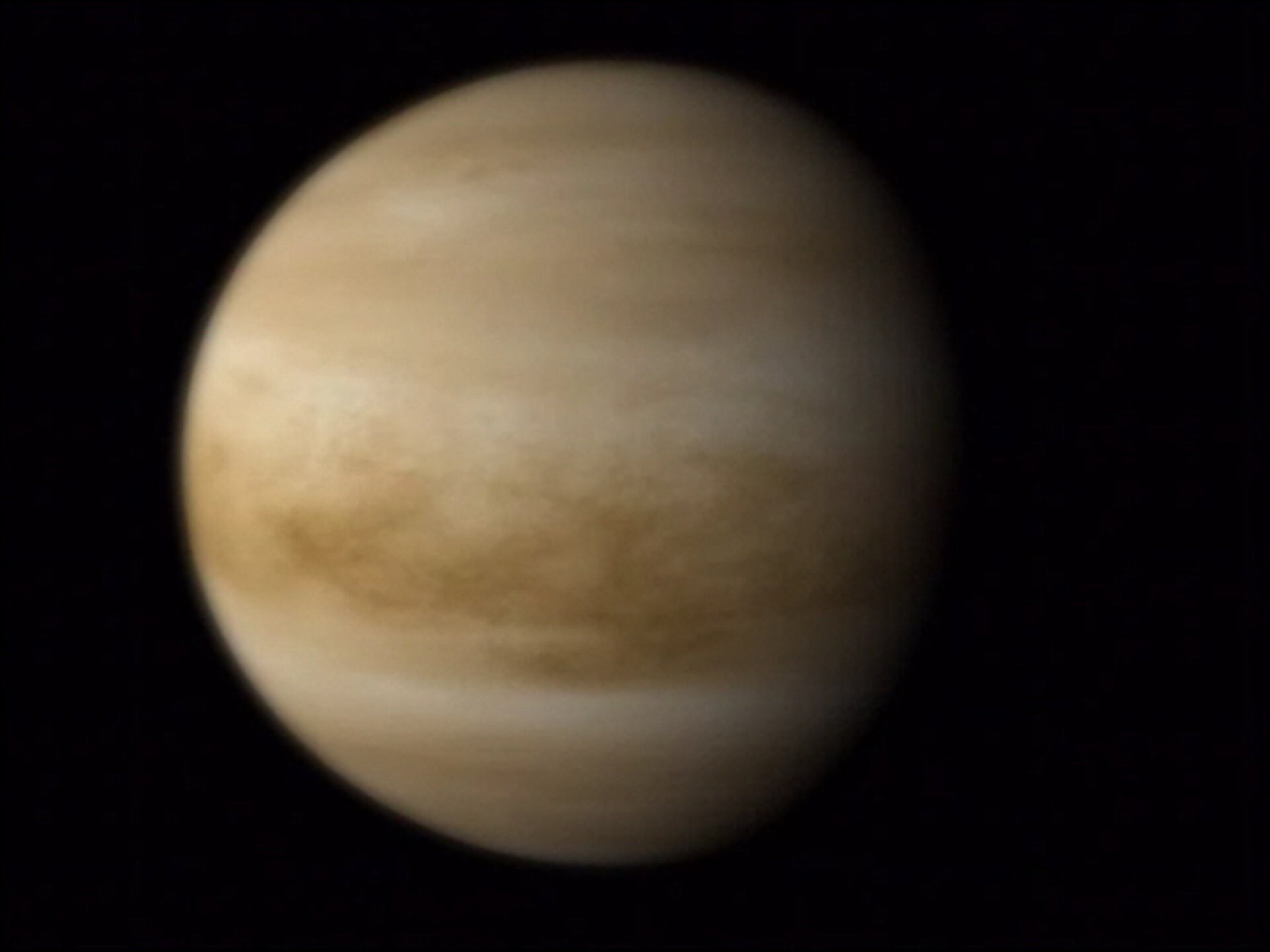
Overview
Venus is the second planet from the Sun, often referred to as Earth's "sister planet" due to its similar size and composition. However, its harsh environment sets it apart. With a thick atmosphere composed mostly of carbon dioxide and clouds of sulfuric acid, Venus experiences a runaway greenhouse effect, making it the hottest planet in our solar system, with surface temperatures exceeding 900°F (475°C). The planet's surface is rocky, marked by plains, mountains, and large volcanoes. Despite its proximity to Earth, Venus's harsh conditions make it an unlikely candidate for life as we know it. Its extreme temperatures, crushing atmospheric pressure, and toxic atmosphere present significant challenges for exploration.
Imagining a Colony above Venus
A settlement on Venus would face extreme challenges due to its harsh environment, but it’s not entirely out of the realm of possibility. Due to the planet's high temperatures, crushing atmospheric pressure, and sulfuric acid clouds, a surface settlement would be impossible. However, there are a few concepts that could make a settlement feasible, primarily focusing on floating cities in Venus’s upper atmosphere.
Environmental Challenges
Europa presents a hostile environment for human habitation:
- Thick Clouds and Acid Rain: The lower atmosphere is filled with sulfuric acid clouds, so any structure would need to be heavily shielded to protect against the acidic environment. This could include protective coatings and materials that are resistant to corrosion.
- Wind and Storms: Venus experiences violent winds and storms in the atmosphere. Floating settlements would need to be rigidly anchored or moveable to avoid or adapt to these conditions.
- Long-Term Habitation: The long-duration stay on Venus would require sustainable systems, such as self-replenishing food sources, waste recycling, and psychological support for the settlers, given the isolation and harsh environment.
Possible Colony Design
- Cloud City The most viable location for a settlement would be in the upper atmosphere of Venus, around 50 to 60 kilometers (31 to 37 miles) above the surface. Here, the temperature is more manageable (around 30-40°C or 86-104°F) and the pressure is similar to Earth's surface pressure.
- Floating Plattforms Large, aerostatic habitats would float in this region, kept aloft by either buoyant gases (such as helium or hydrogen) or aerostats (balloon-like structures).
- Zeppelin-like Design These habitats could resemble large, transparent domes or modular stations, possibly shaped like zeppelin-like dirigibles. They would be capable of moving around to avoid storms and would include living spaces, laboratories, and renewable energy sources like solar panels (which would be more effective in the upper atmosphere).
Functionality and Purpose
While the challenges of settling Venus are immense, a colony could achieve significant scientific, technological, and practical milestones. It would push human exploration to new frontiers, contribute valuable research to science, and potentially unlock new resources for future space missions. The pursuit of a Venus colony, though distant, could become a critical part of humanity’s journey into the cosmos.
Commercial and Industrial Exploitation
A colony above Venus, located in the planet's upper atmosphere where conditions are more manageable, could unlock several commercial possibilities.
- The colony could play a key role in monitoring Venus’s extreme weather systems, providing valuable data on atmospheric phenomena that could improve forecasting for Earth-based weather systems.
- Innovations in disaster prediction, particularly related to environmental catastrophes like hurricanes, typhoons, and volcanic eruptions, could be tested and refined on Venus.
- The harsh conditions on Venus could drive breakthroughs in materials science. New alloys, fabrics, and insulating materials resistant to high temperatures, radiation, and sulfuric acid could be developed and used on Earth or other space colonies.
- Venus could lead to advancements in space architecture and habitation technologies.
- enus’s upper atmosphere could act as a refueling station or transportation hub for missions traveling deeper into the Solar System.
- The colony could serve as a data center for commercial use, taking advantage of Venus's stable atmosphere and low temperatures at high altitudes
- Venus’s upper atmosphere offers a relatively stable and unique location for satellite communication.

